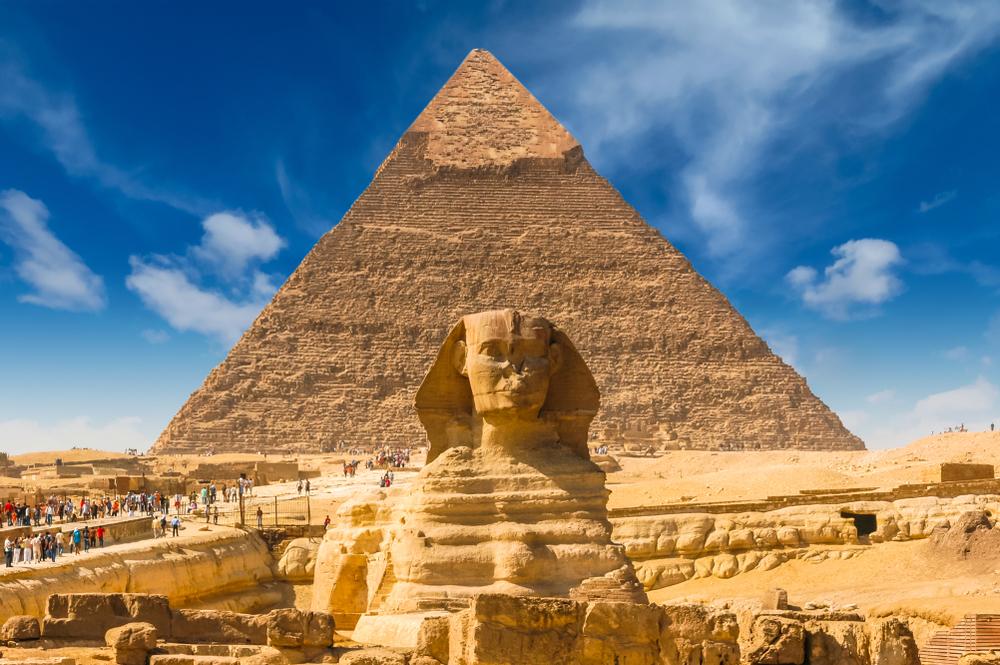The world is adorned with remarkable historical marvels that reflect the ingenuity and achievements of diverse civilizations. From the Great Wall of China’s monumental defense to the mystical Pyramids of Giza, these wonders span continents and epochs. Machu Picchu’s ancient Incan city perches in breathtaking seclusion, while the Colosseum’s grandeur echoes the power of ancient Rome. The Taj Mahal’s exquisite beauty commemorates love, and Angkor Wat’s sprawling temple complex exemplifies Khmer architectural brilliance. Chichen Itza’s Mayan pyramid and Stonehenge’s enigmatic circles invoke wonder, while Petra’s rose-red city and the Parthenon’s Greek splendor transport us across time and cultures. These marvels unite us through their enduring significance, serving as vivid reminders of humanity’s artistic, engineering, and cultural achievements throughout history.
Acropolis of Athens, Greece
Perched atop a rocky hill in the heart of Athens, the Acropolis stands as a timeless testament to ancient Greek civilization. This iconic site showcases some of the most extraordinary architectural and artistic achievements of the ancient world. The Parthenon, an awe-inspiring temple dedicated to the goddess Athena, reigns as the centerpiece of the Acropolis. Its majestic columns and intricate sculptures reflect the pinnacle of Greek classical architecture. The Acropolis also houses the Erechtheion, with its distinctive Caryatid statues, and the Propylaea, a monumental entrance gateway. Visitors can immerse themselves in the historical significance of the site, gazing out over the modern city below and contemplating the wisdom and creativity of the past. Acropolis Athens tickets grant access to this remarkable site, allowing visitors to explore its ruins, marvel at its ancient grandeur, and gain insights into the birthplace of democracy and philosophy. A journey to the Acropolis is a voyage through time, where the echoes of ancient Greece’s cultural and intellectual achievements resound in the present day.
Pyramids of Giza, Egypt
The Pyramids of Giza, located on the Giza Plateau just outside Cairo, Egypt, are a timeless testament to the grandeur and engineering brilliance of ancient civilizations. These monumental structures, consisting of the Great Pyramid, the Pyramid of Khafre, the Pyramid of Menkaure, and the enigmatic Sphinx, stand as some of the most iconic and enduring symbols of human achievement. The Great Pyramid of Giza, attributed to Pharaoh Khufu (Cheops), is the largest and oldest of the three pyramids. Its construction remains a marvel, with massive limestone blocks meticulously quarried, transported, and precisely fitted together. The pyramid’s alignment with cardinal points and its internal chambers, including the King’s Chamber and Queen’s Chamber, continue to intrigue researchers and historians. The Pyramid of Khafre, slightly smaller but seemingly taller due to its higher placement on bedrock, features a limestone casing that has partly endured the passage of time. The Pyramid of Menkaure is the smallest of the trio and showcases various design elements. Adjacent to these pyramids is the Great Sphinx of Giza, a colossal limestone statue with the body of a lion and the head of a pharaoh, often associated with Khafre. The Sphinx’s enigmatic expression and imposing presence add to the site’s allure.
Great Wall of China, China
The Great Wall of China stands as an awe-inspiring testament to human ingenuity and determination. This iconic structure winds its way across the varied landscapes of northern China, stretching over thousands of miles. Built over centuries by various dynasties, the Great Wall was intended as a defense against invading forces, demonstrating the strategic vision of ancient Chinese rulers. The wall’s construction utilized a range of materials, including earth, wood, brick, and stone, adapted to the local geography. Its imposing watchtowers, walls, and fortifications were designed to provide both defense and communication along its length. Contrary to popular belief, the Great Wall is not a continuous structure, but rather a series of walls and fortifications built in different periods and by different rulers. The most famous sections, like Badaling and Mutianyu, have been well-preserved and attract millions of visitors each year. Beyond its historical and strategic significance, the Great Wall has become a global symbol of China’s rich culture and history. Its breathtaking vistas and architectural marvels inspire awe in those who visit. Whether for the purpose of exploration, cultural appreciation, or simply to marvel at the scale of human achievement, the Great Wall of China continues to be a profound and enduring global icon.
Machu Picchu, Peru
Machu Picchu, nestled high in the Andes mountains of Peru, is an ancient Incan citadel that has captured the world’s imagination with its breathtaking beauty and historical significance. Often referred to as the “Lost City of the Incas,” Machu Picchu is renowned for its impressive stone architecture, stunning natural surroundings, and enigmatic history. Believed to have been built in the 15th century as a royal estate, Machu Picchu features intricate stone structures, terraced fields, and ceremonial sites. The precise construction techniques and meticulous layout reflect the advanced engineering and architectural knowledge of the Inca civilization. The site’s strategic location atop a ridge offers panoramic views of the surrounding valleys and mountains, adding to its mystique and allure. Notably, the Intihuatana stone, an intricately carved ritual stone, highlights the Inca’s advanced understanding of astronomy and their spiritual connection with the cosmos. Machu Picchu was abandoned in the 16th century during the Spanish conquest and remained largely hidden until its rediscovery by American historian Hiram Bingham in 1911. Since then, it has captivated travelers, historians, and archaeologists alike, offering a glimpse into the sophisticated world of the Inca empire.
Colosseum, Italy
The Colosseum, a symbol of ancient Rome’s grandeur, stands as an enduring marvel of architecture and engineering. This monumental amphitheater, also known as the Flavian Amphitheatre, was commissioned by Emperor Vespasian and completed by his successor, Titus, in AD 80. Situated in the heart of Rome, Italy, the Colosseum was designed to host spectacular public spectacles, including gladiatorial contests, animal hunts, and theatrical performances. The Colosseum’s elliptical shape and massive scale allowed it to accommodate tens of thousands of spectators, making it one of the largest and most impressive structures of its kind in the ancient world. Its tiers of seating, subterranean chambers, and complex mechanisms for staging elaborate events showcased the Romans’ advanced engineering capabilities. Despite the passage of centuries and the effects of natural disasters and human activities, the Colosseum remains a compelling testament to Roman ingenuity and the grandeur of their civilization. Today, it stands as an iconic symbol of Rome’s historical and cultural significance, drawing millions of visitors each year who come to marvel at its ruins and imagine the epic spectacles that once took place within its walls.
Angkor Wat, Cambodia
Angkor Wat, a captivating masterpiece of ancient architecture, graces the lush jungles of Cambodia as the crown jewel of the Angkor Archaeological Park. This vast complex, built in the 12th century during the Khmer Empire, stands as a testament to the ingenuity, creativity, and spiritual devotion of the Khmer people. Angkor Wat is the largest religious monument in the world, encompassing a sprawling network of intricately carved temples, galleries, and pavilions. Its distinctive silhouette against the Cambodian sky, as well as its remarkable bas-reliefs and intricate sculptures, demonstrate the Khmer’s exceptional artistic craftsmanship. The central tower of Angkor Wat represents the cosmic Mount Meru and serves as a focal point of the complex. Its five towers and concentric galleries are surrounded by reflecting pools and a meticulously designed landscape that symbolizes the journey from the earthly realm to the divine. While Angkor Wat is the most famous structure within the park, it is only one of many captivating temples that make up the archaeological site. The ancient city of Angkor boasts a diverse array of temples, each with its own unique architectural style and historical significance.
Chichen Itza, Mexico
Chichen Itza, an archaeological marvel located in the Yucatán Peninsula of Mexico, stands as a testament to the advanced civilization of the Maya people. This ancient city, once a prominent center of trade, culture, and religion, showcases a fusion of architectural ingenuity and astronomical precision. The centerpiece of Chichen Itza is the iconic Pyramid of Kukulkan, also known as El Castillo. This pyramid’s design aligns with remarkable accuracy to the equinoxes, casting shadows that resemble a serpent descending the pyramid’s staircase during these astronomical events. This phenomenon is a testament to the Maya’s sophisticated understanding of celestial movements. El Castillo is surrounded by a wealth of other structures, such as the Great Ball Court, where a unique ball game with ritual significance was played, and the Temple of the Warriors, adorned with intricate carvings and columns resembling warriors. Chichen Itza also features the Cenote Sagrado, a natural sinkhole believed to have held religious significance for the Maya civilization. The site’s architectural elements and artistic representations provide insights into the Maya’s intricate belief systems, social structures, and cosmology.
Stonehenge, United Kingdom
Stonehenge, an enigmatic prehistoric monument located on Salisbury Plain in Wiltshire, England, is a captivating mystery that has puzzled historians, archaeologists, and visitors for centuries. Composed of massive standing stones arranged in circular and horseshoe patterns, Stonehenge’s origins and purpose continue to spark speculation and intrigue. The monument’s construction, dating back over 4,000 years, required the movement and placement of enormous stones, some weighing up to 25 tons. Theories about its purpose range from an astronomical observatory to a religious or ceremonial site, with alignments that coincide with solstices and equinoxes. Stonehenge’s enduring allure lies in its unique and mysterious aura. Its iconic silhouette against the British landscape evokes a sense of ancient wonder, and its historic significance is heightened by its UNESCO World Heritage status. Visitors to Stonehenge can explore the surrounding landscape, learning about its historical context through exhibitions and audio guides. While access to the stone circle itself is regulated to protect the monument, witnessing the sunrise or sunset aligning with the stones during solstices is a magical experience that connects modern observers to the past.
Petra, Jordan
Petra, often referred to as the “Rose City,” is a mesmerizing ancient archaeological site nestled within the rugged mountains of southern Jordan. Carved into the pink-hued cliffs by the Nabateans over two thousand years ago, Petra is a UNESCO World Heritage site and one of the New Seven Wonders of the World. The entrance to Petra is through the narrow Siq, a dramatic sandstone gorge that leads to the iconic Treasury (Al-Khazneh). This stunning façade, adorned with intricate carvings and reliefs, is just one of the many architectural marvels found within Petra. The site is replete with elaborately carved tombs, temples, theaters, and dwellings, reflecting the ingenious engineering and artistic skills of the Nabateans. Petra was a thriving trading and cultural hub during its prime, connecting civilizations and serving as a crossroads for commerce. Its historical significance is woven with tales of the Silk Road and cultural exchange. The Monastery (Ad-Deir), another awe-inspiring structure, awaits those who undertake a strenuous hike up the mountains. The High Place of Sacrifice and the Royal Tombs are further examples of Petra’s intricate rock-cut architecture.
The Parthenon, Greece
The Parthenon, an iconic symbol of ancient Greece’s cultural and architectural legacy, stands atop the Acropolis hill in Athens. This majestic temple, dedicated to the goddess Athena, is a pinnacle of classical Greek architecture and a testament to the city-state’s artistic and intellectual achievements. Built during the 5th century BC, the Parthenon’s Doric columns, pediments, and friezes showcase the precision and symmetry characteristic of ancient Greek design. Its aesthetic harmony and mathematical proportions have inspired generations of architects and artists. The Parthenon’s sculptural elements, including the metopes and the renowned frieze, narrate mythological and historical narratives. The statue of Athena Parthenos, crafted by the sculptor Phidias, once stood within the temple, symbolizing the city’s reverence for wisdom and defense.


